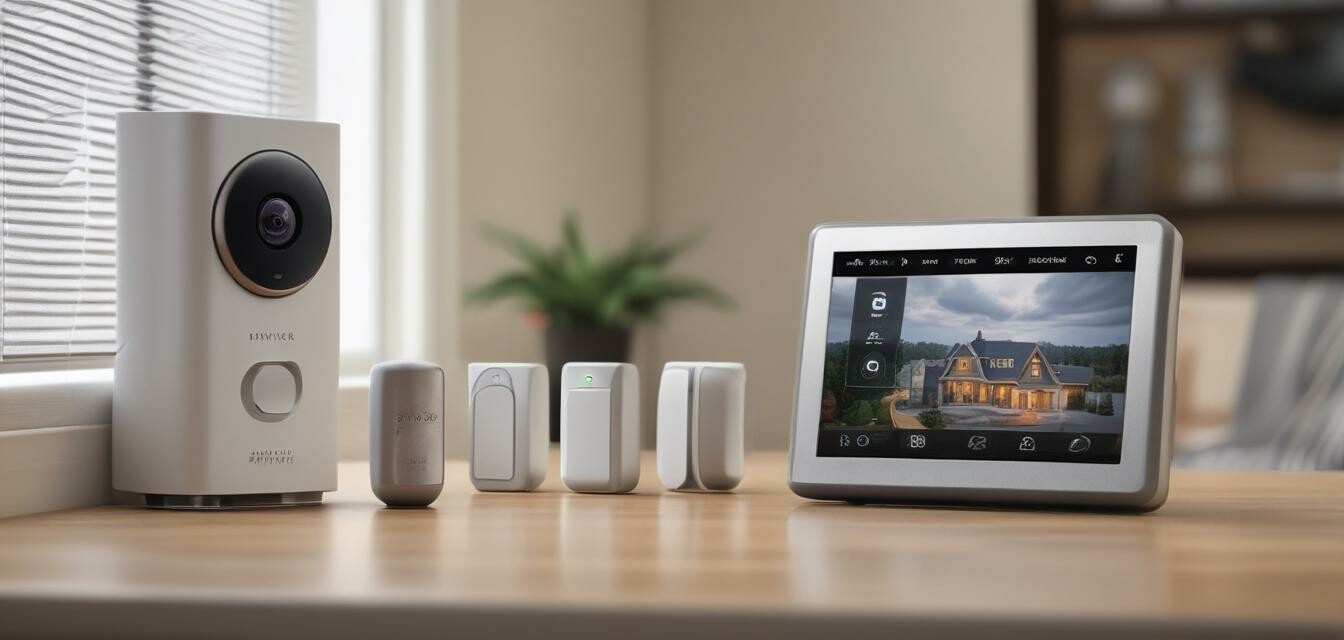
Best Practices for Integrating Smart Home Security
Key Takeaways
- Begin with a clear assessment of your home security needs.
- Choose compatible devices to ensure seamless integration.
- Utilize a hub or smart home platform for centralized control.
- Regularly update device software for optimal performance.
- Test your system frequently to ensure all components work harmoniously.
As smart home technology evolves, integrating various security devices into a cohesive system has become essential for homeowners. A well-integrated security system not only enhances the safety of your home but also provides convenience and peace of mind. This article delves into best practices for effectively integrating your smart home security devices, enabling you to maximize safety and functionality.
Understanding Your Security Needs
Before diving into product selection and integration, assess your specific security requirements by considering the following:
- Which areas of your home are most vulnerable?
- What potential threats are you most concerned about?
- How many devices do you envision incorporating into your system?
Selecting Compatible Devices
Choosing the right devices is crucial. Look for devices that are known for interoperability. Here are commonly used smart home security devices:
| Device Type | Functionality | Examples |
|---|---|---|
| Smart Cameras | Real-time video monitoring | Indoor and outdoor cameras |
| Smart Locks | Keyless entry and remote locking | Deadbolts and keypads |
| Motion Sensors | Detect movement in designated areas | PIR sensors and smart motion detectors |
| Alarm Systems | Triggered alerts for unauthorized entry | Professional monitoring systems |
Utilizing a Central Hub
Integrating various devices can become complicated if each device is controlled individually. A smart home hub can simplify operations:
- Provides a unified control interface for all devices.
- Coordinates interactions between different devices.
- Enables automation features, such as scheduling tasks
For more information on smart home hubs, visit our section on buying guides.
Ensuring Software Compatibility
Compatibility doesn’t end with hardware; software needs to be updated regularly. Make sure to:
- Check for firmware updates on all your devices.
- Utilize applications that manage updates automatically.
- Remove outdated devices that can compromise security.
Regular Testing and Maintenance
After your system is set up, regular testing is essential to ensure your security devices function properly:
- Run tests on cameras and motion sensors monthly.
- Check battery levels on devices frequently.
- Simulate alarms to ensure they respond appropriately.
Integrating Other Smart Devices
Beyond security devices, consider integrating other smart home solutions:
- Smart lighting can deter intruders.
- Smart thermostats enhance energy efficiency.
- Smart assistants can manage and control your devices using voice commands.
Creating an Action Plan
To ensure optimal functionality and integration of your smart security system, adopt an action plan:
- Conduct a home security assessment.
- Choose compatible devices.
- Install and configure devices correctly.
- Set up a smart hub for consolidated control.
- Develop a testing schedule for all devices.
Tips for Beginners
- Start small: Begin with essential devices and expand over time.
- Read product manuals thoroughly for optimal setup.
- Join online forums for advice and support.
Pros
- Increased home security and peace of mind.
- Convenient control over devices from anywhere.
- Long-term savings on utilities and Insurance.
Cons
- Initial investment can be high.
- Requires regular maintenance and updates.
- Potential for hacking if not properly secured.
Conclusion
Integrating smart home security systems involves a strategic approach that encompasses device selection, software compatibility, and ongoing maintenance. By following the best practices outlined in this article, you can create a cohesive system that boosts your home's safety and enhances usability. For more tips on maximizing your smart home security, check our blog for relevant articles.
